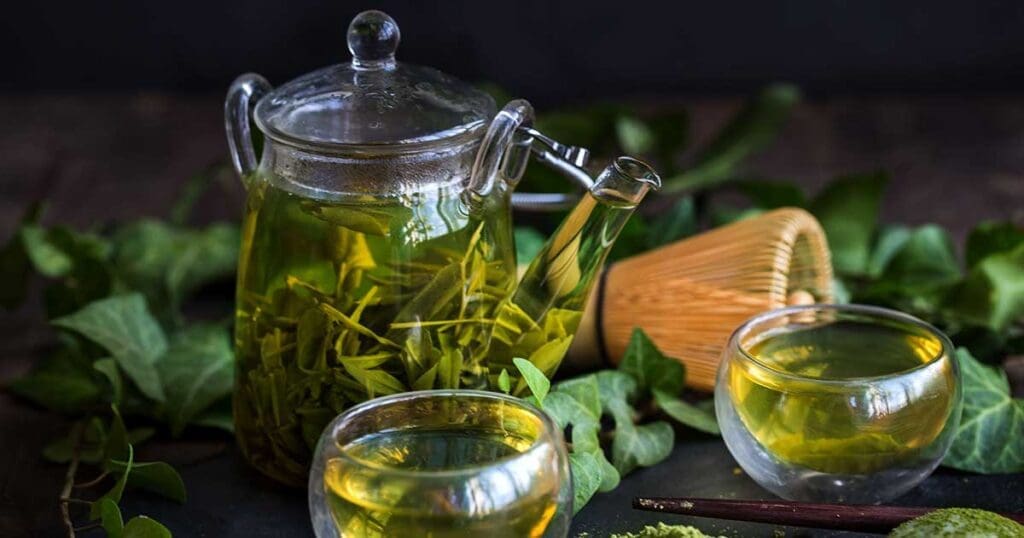Tea tourism is growing fast, thanks to the UK’s love for tea. With 84% of the UK drinking tea daily, it’s clear why it’s popular. Places like Darjeeling and Japan’s lush gardens offer unique experiences. Here, visitors can learn about tea making and find new favorites.
Tea tourism lets people explore different cultures and traditions. Many tea estates now offer tours and tastings. This way, visitors can dive into the world of tea and learn about its history and production.
Introduction to Tea Tourism
Tea plantation tours are getting more popular. They let travelers see the world of tea and enjoy the beauty of tea travel spots. Tea estates are now welcoming visitors, showing them how tea is made.
From India’s tea gardens to Africa’s tea farms, tea tourism takes you to the tea industry’s heart. It’s a journey that shows you the beauty of tea production.
Travelers looking for unique experiences are drawn to tea tourism. Immersive experiences like tea picking and blending are big attractions. The chance to taste different teas and learn how they’re made makes tea tourism exciting.
Places like India, China, and Japan offer great tea experiences. They have historical tea plantations and friendly hosts. For example, India’s Kannan Devan Hills Plantations Company spans over 24,000 hectares and produces 22 million kilograms of tea each year.
Tea tourism is perfect for those interested in tea production or just wanting to see tea plantations. It combines culture, history, and natural beauty. This adventure will give you unforgettable memories and a deeper love for tea.
Iconic Tea Plantations Around the World
Exploring visiting tea estates takes you to some of the world’s most famous tea plantations. These places are known for their top-notch tea and beautiful views. From Darjeeling’s misty hills to Uji’s lush gardens, they’re a dream for tea lovers.
Many top tea farms are scattered across the globe, each with its own special charm. For instance, India’s Kolukkumalai Tea Estate is famous for its excellent tea and breathtaking views. It’s a favorite spot for those who love visiting tea estates.
These iconic tea plantations offer more than just great tea. They let you dive into the history of tea making or enjoy nature’s beauty. With their stunning landscapes, rich history, and quality tea, they showcase the art of tea farming. They’re a great reason to explore top tea farms.
The Experience of Tea Picking
Tea tasting experiences are a big part of the tea tourism world. They let visitors see how tea is made. Many tea farms now let visitors help out, teaching them old tea-making ways and letting them pick tea leaves.
At places like the Araksa Tea Plantation in Thailand, visitors can learn about tea farming. They see how important good tea leaves are. It’s a chance to connect with nature and the local people.

Tea tasting experiences help visitors understand the hard work that goes into making tea. Picking tea leaves is a memorable experience. It shows the effort and care that goes into every cup of tea. Whether you love tea or just want a new adventure, picking tea leaves is a great way to dive into the world of tea.
Types of Tea Grown Globally
As global tea tourism grows, visitors can explore a wide range of teas. Tea is grown in over 32 countries, each with its own unique flavors. From green tea’s delicate taste to black tea’s strong flavor, there’s something for everyone.
In places like China, India, and Japan, tea is a big part of the culture and economy. China produces about 40% of the world’s tea, mostly green tea. India, the second-largest producer, focuses on black tea.
On their global tea tourism adventures, visitors can try different teas. They’ll learn how each tea is made and enjoy its special flavors. Whether it’s Darjeeling’s muscatel notes or Assam’s bright color, there’s a tea for every fan.
The popularity of global tea tourism has led to more high-quality teas. Tea makers are now creating unique and exotic varieties. This means tea lovers can find everything from traditional to innovative teas, showing the global tea industry’s rich diversity.
Cultural Significance of Tea
Tea deeply influences the culture and traditions of many countries. It’s a key part of their heritage. From Japan’s tea ceremonies to India’s tea festivals, tea’s cultural role is intriguing. For those planning a tea vacation, knowing local tea customs is vital.
In places like India and China, tea is more than a drink. It’s a big part of daily life. Tea plantations there show the rich tea culture, with tours and workshops on traditional tea-making. Visitors can see unique tea ceremonies and learn about tea’s local traditions.
The Addabarie Tea Estate in India lets visitors see tea making up close. The Sourenee Tea Resort in China teaches about traditional tea-making. These tea vacation spots offer relaxation and a deeper tea culture understanding.
Whether you love tea or just want to learn about it, visiting these places is rewarding. By diving into local customs, you’ll appreciate tea’s cultural value more. And you’ll make unforgettable memories of your tea vacation.
Recommended Tea Tour Packages
For those eager to dive into the world of tea, tea tour packages are a fantastic choice. Tea tourism has grown, with many tea estates and tour operators now hosting guided tours. These packages let visitors see the best of tea tourism, from local farms to beautiful gardens.
The 7-Day Private Tea Tour of Taiwan is a great example. It takes you through key tea areas like Pinglin, Sun Moon Lake, and Alishan. You’ll get to try your hand at making tea and learn about different types, like Oolong and black tea.

These tours also offer cultural experiences, like visiting traditional tea villages and markets. You’ll see the National Palace Museum in Taipei, which has tea-related artifacts. With guided tours and self-guided options, you can pick what fits you best.
Whether you love tea or just want to learn more, these packages are perfect. They mix tea activities, cultural experiences, and stunning views. Tea tour packages are a great way to dive into the world of tea.
Best Time to Visit Tea Plantations
When planning a trip to tea plantations, it’s key to think about the best time to go. This depends on the season and the weather. For example, the Araksa Tea Plantation in Thailand is best from November to March. In India, Munnar’s tea plantations are great from August to May, skipping the cold months of December and January.
Tea plantation tours are a special experience. They let you see the green tea gardens and learn how tea is made. The Addabarie Tea Estate’s tours, for example, are half a day long. They’re best from May to October, during the harvest season. These tours are a chance to dive into the tea world, learning about its production and cultural importance.
In places like Darjeeling, the tea estates are high up. The best time to visit depends on when the tea is picked. The First Flush is in March, and the Second Flush is in May and June. Knowing when to go is important for a great trip, with its memorable views and tea gardens.
If you love tea or just want to explore, knowing when to visit is essential. By planning well, you’ll enjoy your tea plantation tours fully. You’ll get to experience the beauty, sounds, and tastes of these amazing places.
Health Benefits of Tea
Tea has been a staple in many cultures for centuries. Its health benefits are many. It can help reduce heart disease risk and improve mental and physical health. Tea tourism lets visitors learn about these benefits firsthand, exploring the exciting world of tea.
Antioxidants and Wellness
Tea’s high antioxidant content is a key health benefit. Antioxidants protect the body from free radicals, which can harm cells and lead to diseases. Green tea, in particular, is packed with antioxidants, making it great for a healthy diet.
Mental and Physical Benefits
Tea also offers mental and physical benefits. It can reduce stress and anxiety, improve sleep, and boost the immune system. With its many benefits and tasty flavors, it’s no surprise tea is the second most popular drink worldwide, after water.
How to Plan a Tea Tourism Trip
Planning a tea tourism trip needs careful thought. You must research your destination and budget for your journey. With the growth of tea tourism, planning your trip is easier than ever. Online resources and guides help make your experience unique and exciting.
When looking into your destination, think about the time of year and tea harvest. For instance, India’s tea plantations are best visited from May to October. Also, decide what type of tea you want to try, like Assam black tea or green tea.

For budgeting, think about transportation, accommodation, and food costs. Don’t forget any extra activities or tours. Many tea plantations offer tours and tastings. These can teach you about tea making and let you try local flavors.
Eco-Friendly Tea Tourism
As we all become more aware of our planet, eco-friendly tea tourism is becoming more popular. This kind of tourism lets visitors see the beauty of tea plantations. It also supports sustainable practices. Tea estates and tour operators are now using green methods, like cutting down on waste and saving water.
Visitors can join in on tea picking and learn about sustainable practices in the tea world. By picking eco-friendly tea tourism options, tourists help local communities and lessen their environmental footprint. The Tea Rebellion website has a detailed guide on eco-friendly tea tourism, including sustainable practices and supporting local communities.
Some tea plantations, like the Sourenee Tea Resort, have been around for over 100 years. They cover almost 137 hectares and offer tours. These tours include a half-day adventure through lush tea gardens and a visit to their factory. By supporting these plantations, visitors help promote sustainable practices and eco-friendly tea tourism.
In summary, eco-friendly tea tourism is a unique and exciting way to explore the world of tea. By choosing green tour operators and supporting local communities, tourists can lessen their environmental impact. They also help promote sustainable practices in the tea industry.
The Future of Tea Tourism
The future of tea tourism is looking bright. New trends and innovations are making tea tourism exciting. Tea lovers can dive into the world of tea, seeing the latest in the industry.
Tea tourism is growing, thanks to eco-friendly practices. Travelers want to reduce their environmental impact. Now, tea plantations offer sustainable experiences, making tea tourism unforgettable.
Tea tourism is set to grow globally. It combines culture, nature, and tradition. This mix attracts many travelers, from tea fans to adventure seekers. The future of tea tourism looks promising, with new trends and innovations shaping the industry.
Conclusion: A Journey Worth Taking
As our journey through tea tourism comes to an end, it’s clear it’s a path worth taking. From Darjeeling’s lush tea plantations to Uji’s serene gardens, tea tourism offers a deep dive into culture and tradition. It lets visitors experience the beauty of tea in a unique way.
Whether you love tea or just want to learn more, tea tourism changes you. You’ll learn how to pick the best leaves and see how they become your favorite tea. Every step in these magical places makes you appreciate tea even more.
When planning your tea tourism trip, remember the journey is key. Dive into local customs, taste the flavors, and meet the tea lovers who keep the tradition alive. With all the info and resources out there, you’re ready for an unforgettable tea tourism adventure.




Facebook Comments